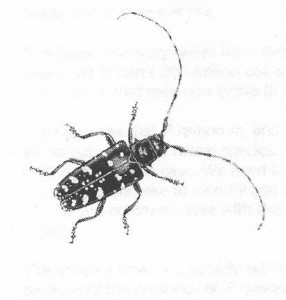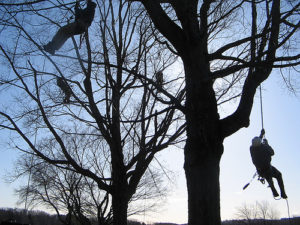As you might remember, the Center for Invasive Species Prevention and the Vermont Woodland Owners Association last year proposed several amendments to the Farm Bill that we hoped would strengthen the U.S. Department of Agriculture’s programs on non-native insects, plant pathogens, and invasive plants. These proposed amendments are here and here.
Two of our amendments sought to strengthen funding for long-term strategies to counterpests and restore pest-depleted tree species to the forest. We intended these proposals to be implemented together. They were put forward as two proposals only because they fell into different sections, called “titles”, of the Farm Bill.
Our first proposal would create a grant program managed by the National Institute of Food and Agriculture (NIFA) to fund research focused on biocontrol and genetic manipulation of the pests; enhancement of host-resistance mechanisms for tree species; and development of other strategies for restoration. U.S. government agencies, state cooperative institutions, academic institutions with a college of agriculture or wildlife and fisheries, and non-profit organizations would all be eligible for funding.
Our second proposal would provide long-term funding to a similar array of organizations to support research into and deployment of strategies for restoring pest-resistant genotypes of native tree species to the forest. We suggested funds be drawn from the McIntyre-Stennis program. Successful grant applicants would be required to integrate several components into a cohesive forest restoration strategy:
- Collection and conservation of native tree genetic material;
- Production of sufficient numbers of propagules of pest-resistant native trees to support landscape scale restoration;
- Site preparation in native trees’ former habitat;
- Planting of native tree seedlings; and
- Post-planting maintenance of the trees.
Furthermore, priorities for competitive grants issued by this second fund would be based on the level of risk to forests in the state where the activity would take place, as determined by the following criteria:
- Level of risk posed to forests of that state by non-native pests, as measured by such factors as the number of such pests present there;
- Proportion of the state’s forest composed of species vulnerable to non-native pests present in the United States; and
- Pests’ rate of spread via natural or human-assisted means.
Several coalitions presented these two proposals – in various forms – to the House and Senate Agriculture committees earlier this year.
ACTION IN THE HOUSE OF REPRESENTATIVES
The Stefanik Amendment
In the House, Representative Elise Stefanik (R-NY21) inserted a modified version of CISP’s proposed amendments into the Farm Bill (H.R. 2) . Ms. Stefanik’s speech on the House floor introducing her amendment, and support of that amendment by Rep. Glenn Thompson of Pennsylvania and Agriculture Committee Chairman K. Michael Conaway (R-TX) can be heard here; scroll to time 25.16
The Stefanik amendment includes some of the key provisions advocated by CISP but it also differs in significant ways. That is, it relies on an existing grant-making program, the Competitive Forestry, Natural Resources, and Environmental Grants program. This program funds proposals pursuing numerous purposes, including pest management and genetic tree improvement. Rep. Stefanik’s amendment adds a new purpose, restoring forest tree species native to American forests that have suffered severe levels of mortality caused by non-native pests. It is unclear whether this approach will significantly increase resources available for breeding trees resistant to non-native pests.
Another difference is that institutions receiving funds would have to demonstrate that their activity is part of a broader strategy that includes at least one of the following components:
1) Collection and conservation of genetic material;
2) Production of sufficient numbers of propagules to support the tree’s restoration to the landscape;
3) Site preparation of former native tree habitat;
4) Planting; and
5) Post planting maintenance
The original CISP proposal required any funded program to incorporate all of these components.
The Stefanik amendment would award grants based on the same three criteria proposed by CISP.
While we are disappointed that research underlying tree restoration has merely been added to an already-long list of purposes under the Competitive Forestry, Natural Resources, and Environmental Grants program, this approach might be the best we can hope for. There had been considerable opposition to our proposal because it would have changed the formula under which McIntire-Stennis funds are apportioned to the states. Adopted in 1962, the existing formula is based on each state’s
1) area of non-Federal commercial forest land;
2) volume of timber cut annually;
3) total expenditures for forestry research from non-Federal sources;
4) base amount distributed equally among the States.
The Faso Amendment
 The House also accepted an amendment sponsored by Rep. John Faso (R-NY19) that would require APHIS and the US Forest Service to collaborate on surveillance to detect newly introduced tree-killing pests. The agencies would also report to Congress by 2021 on which pests are being detected on imports of wood packaging and living plants (APHIS’ so-called “plants for planting”) and the geographic origins of those pests. Rep. Faso’s speech introducing the amendment and supportive statements by Reps. Thompson and Conaway can be heard here; scroll to time 32 (immediately after the Stefanik amendment).
The House also accepted an amendment sponsored by Rep. John Faso (R-NY19) that would require APHIS and the US Forest Service to collaborate on surveillance to detect newly introduced tree-killing pests. The agencies would also report to Congress by 2021 on which pests are being detected on imports of wood packaging and living plants (APHIS’ so-called “plants for planting”) and the geographic origins of those pests. Rep. Faso’s speech introducing the amendment and supportive statements by Reps. Thompson and Conaway can be heard here; scroll to time 32 (immediately after the Stefanik amendment).
The Welch Bill
Meanwhile, as I blogged earlier, Rep. Peter Welch (D-VT) has introduced a separate bill (H.R. 5519) that contains modified versions of several CISP proposals.
Rep. Welch’s bill would do two things: strengthen APHIS’ access to “emergency” funds to respond to invasive pests, and create a competitive grant program to support research on biological control of plant pests or noxious weeds, enhancing host pest-resistance mechanisms, and other strategies for restoring tree species. These studies must be part of comprehensive forest restoration research. Eligible institutions would include federal and state agencies, academic institutions, and nonprofit organizations. Funding would come from a USDA corporation, the Commodity Credit Corporation so they would not be subject to annual appropriations.
The House has taken no action on Rep. Welch’s bill.
THE CURRENT STATUS OF THE FARM BILL – AND CISP’s BOTTOM LINE
On 17 May, the House of Representatives failed to pass the Farm Bill. No Democrats voted for the bill. About 30 Republicans also voted against the bill – not because they objected to its contents, but because they wanted to force a vote on an immigration bill. House leaders now promise a new vote on the Farm Bill on June 22nd.
Is this good news? As I said, it is complicated! The House bill contains several provisions to which there is significant opposition. The most controversial is a requirement that recipients of food stamps prove that they are working. Other provisions – which have not received much attention in the media, would:
- Allow the U.S. Forest Service and the Interior Department’s Bureau of Land Management to decide for themselves whether an activity might “jeopardize” an endangered species (eliminating the need to consult with the U.S. Fish and Wildlife Service or National Marine Fisheries Service) (Section 8303);
- Allow the U.S. Forest Service and Bureau of Land Management to avoid preparing an environmental assessment under the National Environmental Policy Act (NEPA) for a long list of actions which currently must be assessed. That is, they could claim a “categorical exclusion” when taking a wide variety of “critical” actions aimed at addressing several goals. These include countering insect and disease infestations, reducing hazardous fuel loads, protecting municipal water sources, improving or enhancing critical habitat, increasing water yield, expediting salvage of dead trees following a catastrophic event, or achieving goals to maintain early successional forest. These “categorical exclusions” would apply to projects on up to 6,000 acres. (Sections 8311 – 8320); and
- Require the EPA Administrator to register a pesticide if the Administrator determines that the pesticide, when used in accordance with widespread and commonly recognized practices, is not likely to jeopardize the survival of a species listed under the Endangered Species Act or to alter critical habitat. Unlike under current law, the Administrator would not be required to consult with the U.S. Fish and Wildlife Service or National Marine Fisheries Service when making such determinations (Section 9111).
The Endangered Species Act, adopted almost unanimously in 1973, requires such “consultations” because experience had shown that agencies proposing projects tended to underestimate the damage that they might cause to imperiled species. NEPA is one of the foundational statutes of U.S. environment protection; it was adopted in 1970. Finally, the EPA Administrator is supposed to decide whether to allow pesticide use based on science, per a much weaker but still important environmental protection statute, the Federal Insecticide, Fungicide, and Rodenticide Act (originally adopted in 1910; significantly amended in 1972).
Is getting an imperfect and partial program that might stimulate breeding of tree species resistant to invasive pests worth accepting this level of damage to fundamental environmental programs?
I don’t think so.
We don’t yet know what the Senate will do. We hope the Senate bill will support strong conservation programs – including strengthening APHIS and research into and application of long-term strategies such as resistance breeding – while not undermining the foundations of our Nation’s conservation and environmental programs.
Meanwhile, the House should rewrite the Farm Bill to remove the objectionable provisions.
Posted by Faith Campbell
We welcome comments that supplement or correct factual information, suggest new approaches, or promote thoughtful consideration. We post comments that disagree with us — but not those we judge to be not civil or inflammatory.


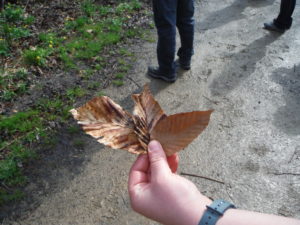
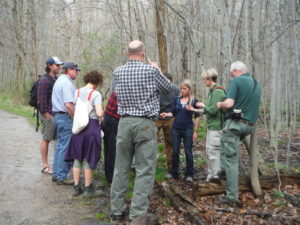
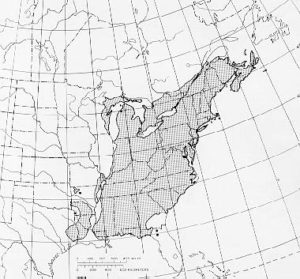
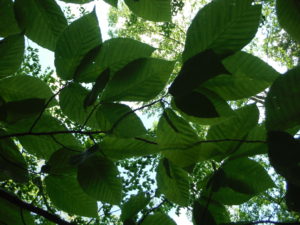

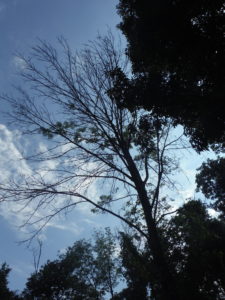
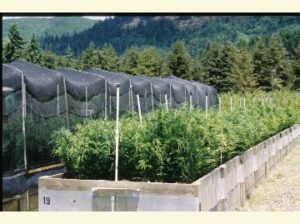 Port-Orford cedar resistance trials
Port-Orford cedar resistance trials
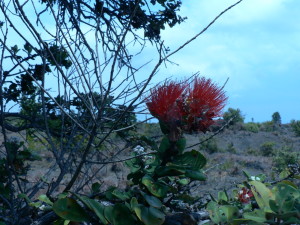
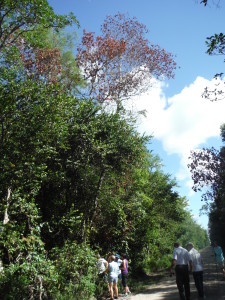 laurel-wilt killed swamp bay in the Everglades
laurel-wilt killed swamp bay in the Everglades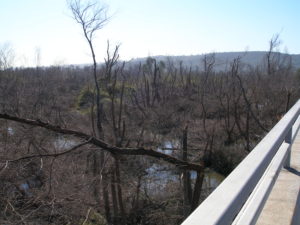
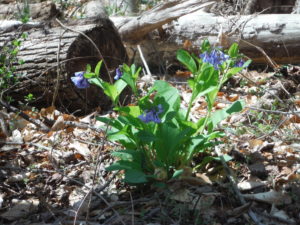
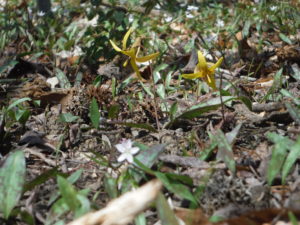 trout lilies & spring beauty
trout lilies & spring beauty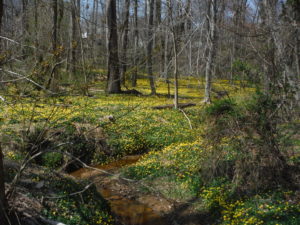
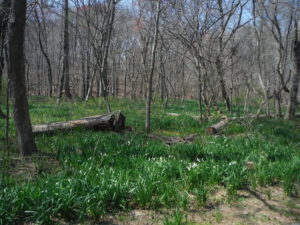
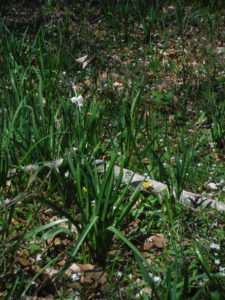
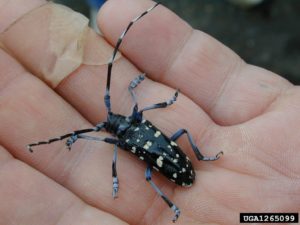
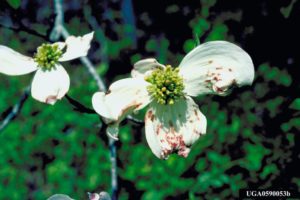 dogwood anthracnose
dogwood anthracnose
